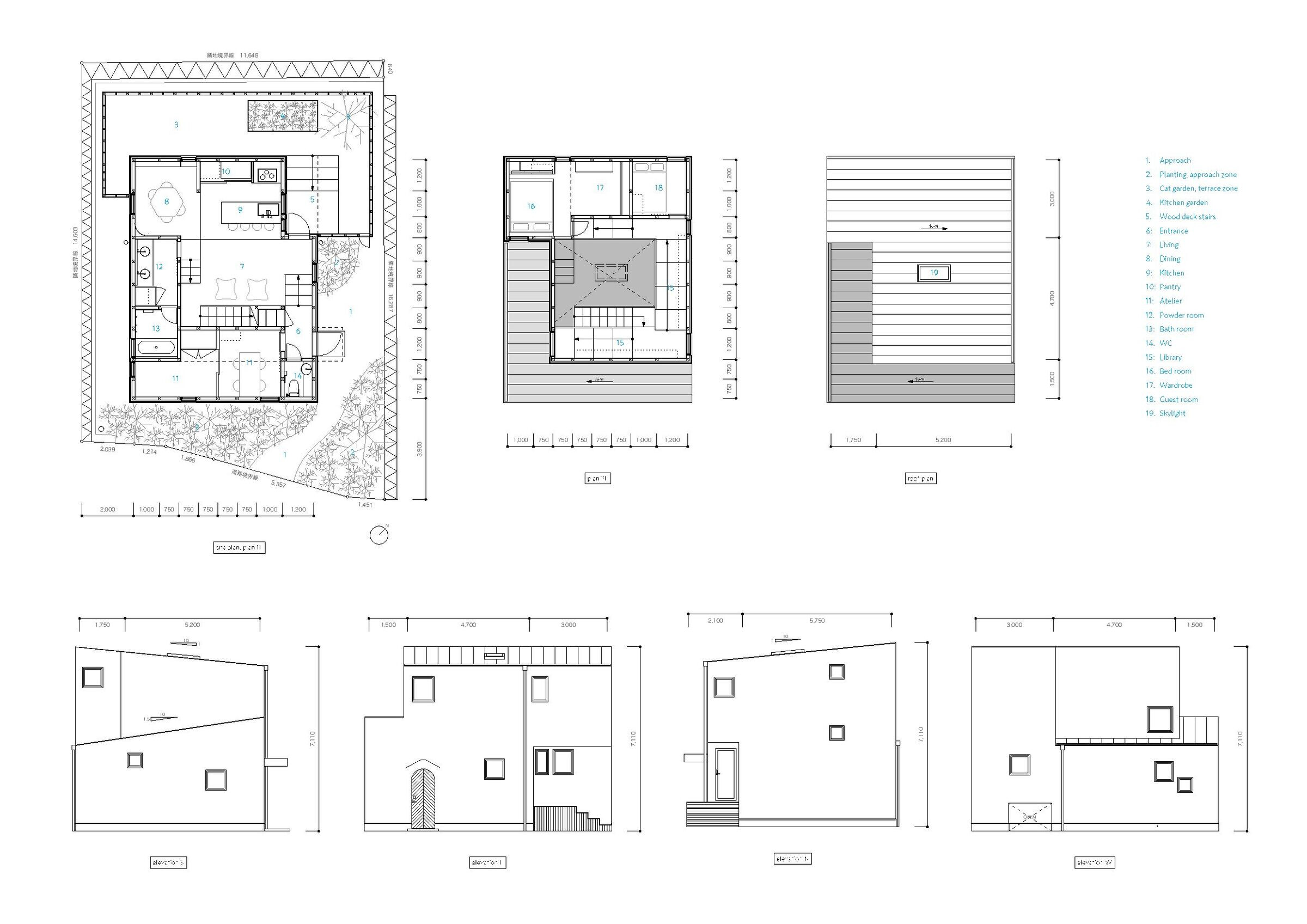- Rethinking a home through the eyes of clients who don’t speak human language
The project planned as a residence and studio of its architect is in Kamakura, a city filled with rich history and lush greenery and located about an hour from central Tokyo. In the house lives a couple in their thirties with two cats.
For cats, the house is their whole world. Wishing to learn how to design a home from the perspectives of our dearest felines, we decided to regard our two cats as “two clients.” Having lived with the two for ten years, we took our design cues from “listening” to them, although they do not speak human words.

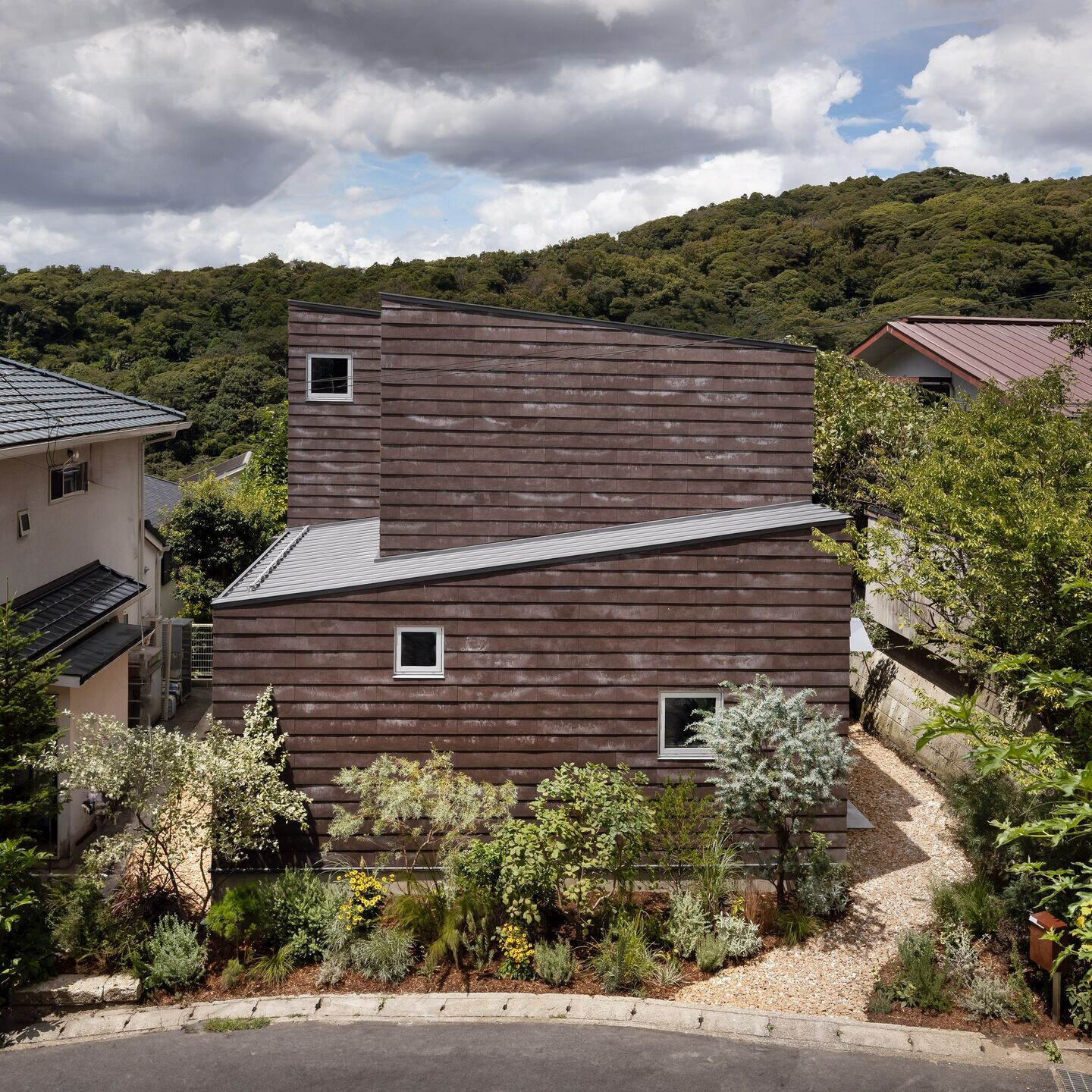
The requests from the cats could roughly be divided into three categories. The first was to be able to choose their “preferred tier of temperature” at any day and time. As they can sense the tiers of temperature by minute differences in height that we humans cannot perceive, they like to move around choosing their place of preference. The second was to be able to be in the same room as their family members, but not too close. They are fond of spending time close to their cohabiters while hiding a little or keeping a distance. The third request was to have multiple choices of places where they could feel safe. The two prefer to move from one comfortable space to another (which each cat has their own) impulsively as the seasons come and go.

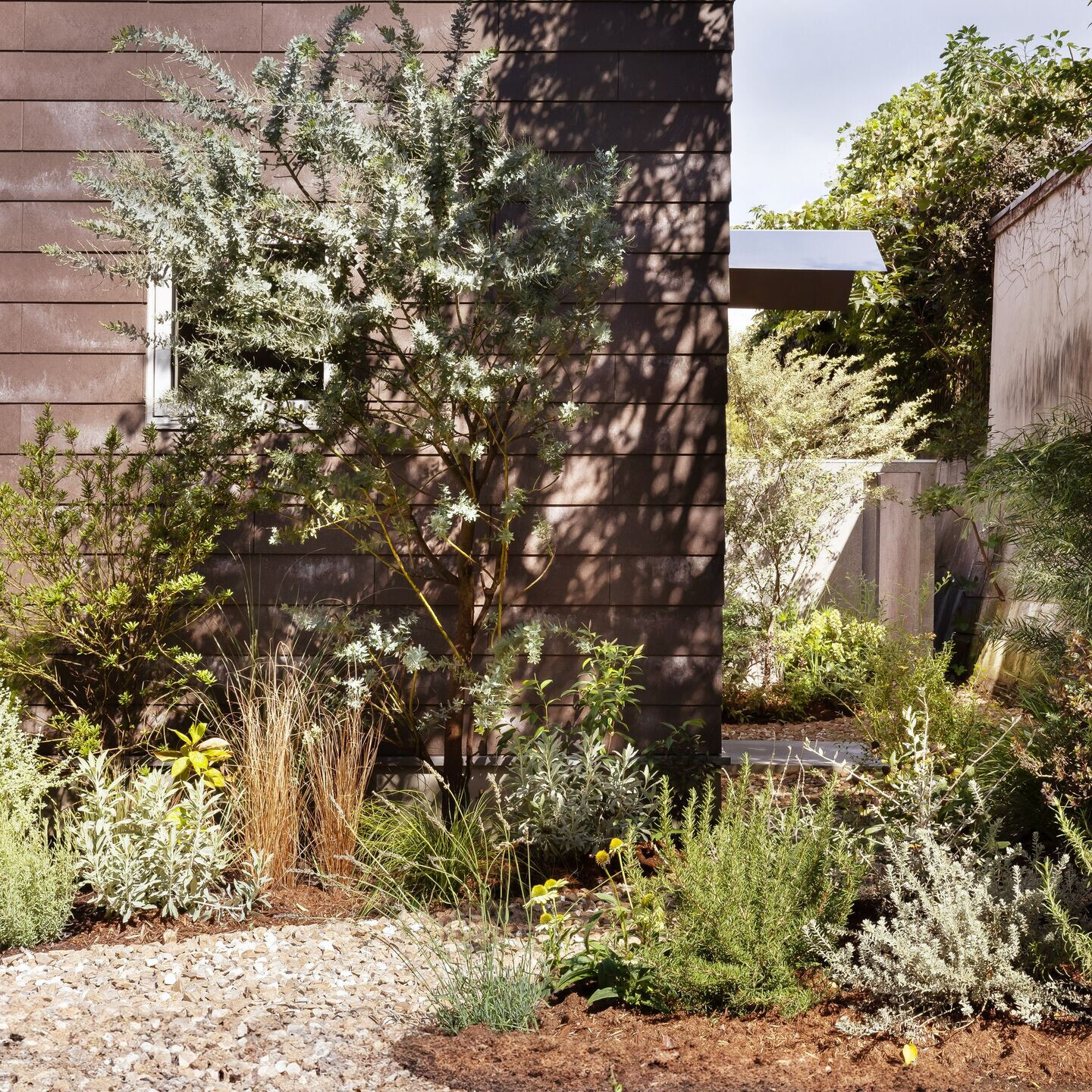
Thus, we decided to design the housing as one big cat tree.
Conceiving the whole house as a large staircase, we placed an atrium with a top light in the center to surround it with spiral steps. The natural light shining through the skylight window illuminates each step of the caracole one by one throughout the day. The rises are designed based on the body measurements of our cats, which led to having 23 different floor levels. The entire house is thus divided into fine stripes of temperature layers, between which our feline clients spend all day traveling. The spiral staircase, wrapped around the atrium with a skylight, was designed to allow the inhabitants to look around the whole house from anywhere without obstructing the line of vision. The standard dimension of the run of each step is generously set to 900 millimeters, so that the cats can hide from people downstairs, keep a certain sense of distance from others, or even sleep peacefully.
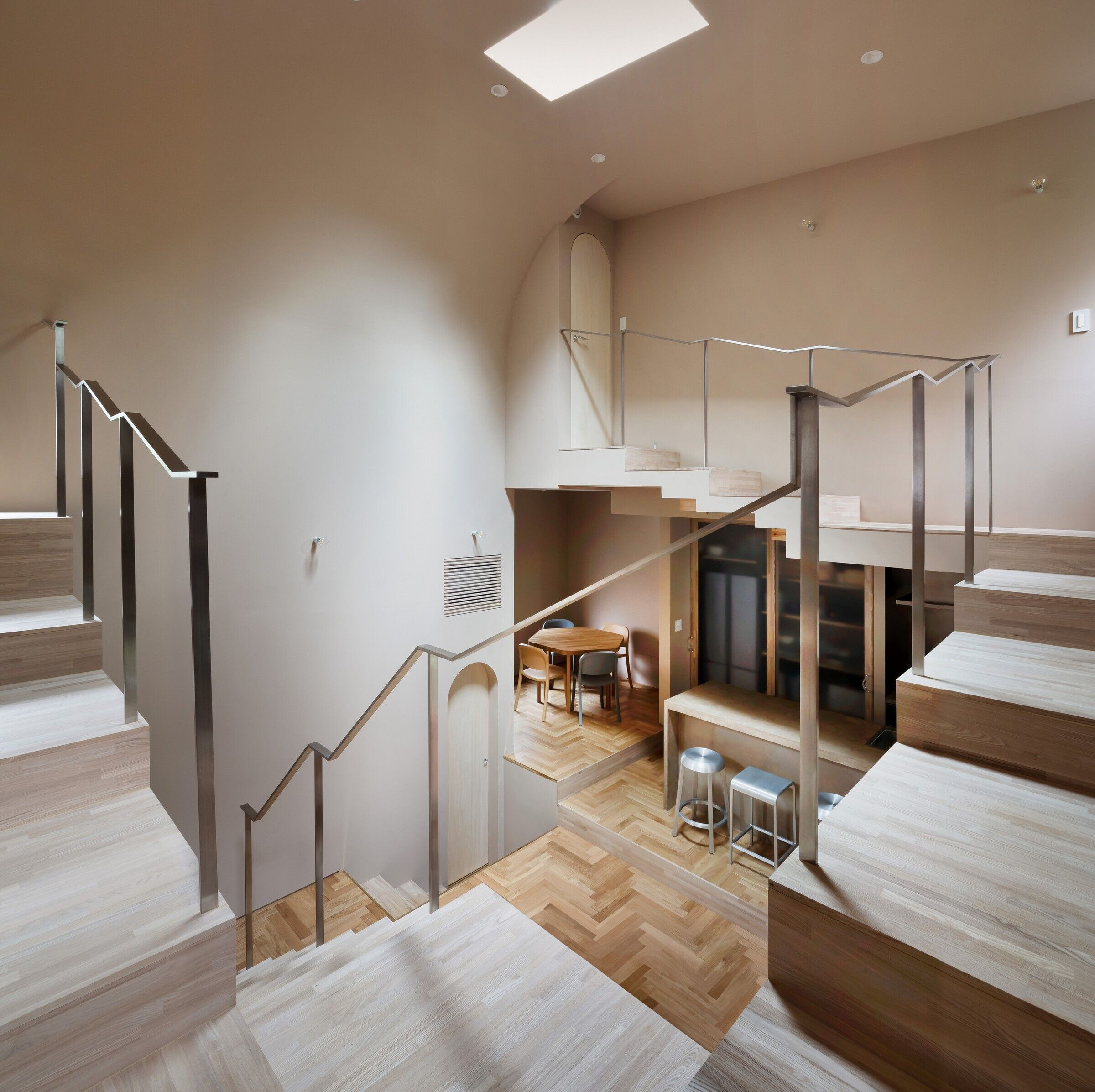

The staircase is a cantilever inspired by tamasudare, a screen made of loosely woven bamboo sticks for a traditional Japanese street performance, where performers twist, fold, and extend it to form various shapes. The structure is exposed to give accent to the open ceiling space. To respond to the highly humid environment of Kamakura, the starkly designed split-level was a reasonable solution. The standard floor level is set one meter above the ground level, creating a buffer space between the raft foundation and the floor, where outside air is introduced and hot water pipes for floor heating are laid. We designed the buffer for temperature and humidity control.

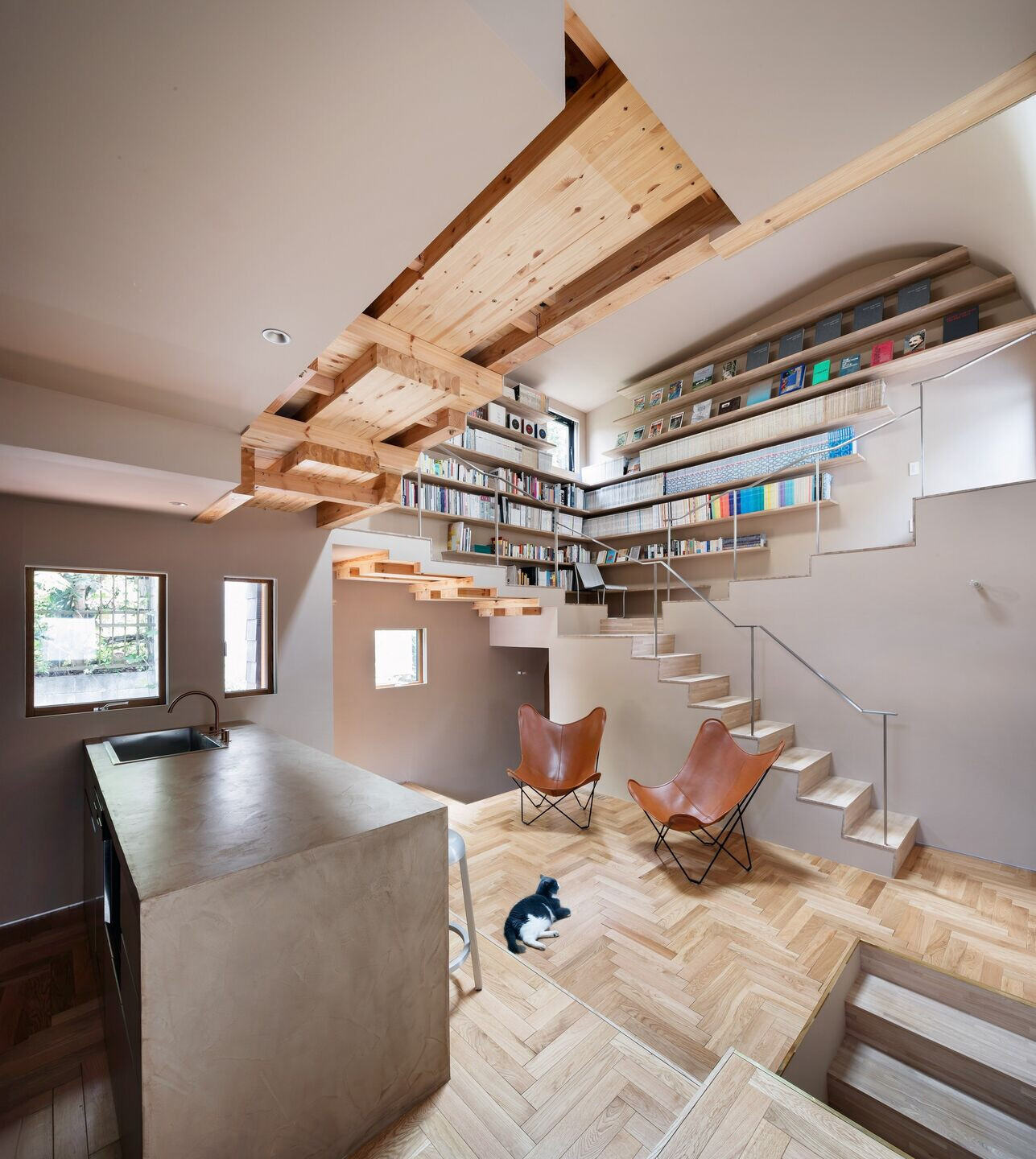
On each corner of the caracole, a bedroom, guest room, studio, kitchen, dining room, and bathroom are placed for our clients to find comfortable spots impulsively. As this is an architect’s studio as much as a home, it inevitably has constant guests. When we have unexpected visitors, each room also functions as a hiding place for the cats. The design of the handrails implemented in the atrium for fall prevention was inspired by the mountain views of Kamakura. The delicate stainless-steel fixture was crafted by skilled ironworkers.
On the wall built along the spiral steps, we designed a bookshelf in a cantilever structure, transforming the staircase from a mere passage to a split-level library. For the cats, the stairs function as cozy bedding, whilst for us humans, they become a book vault with suitable height differences to sit anywhere. A part of the circular steps bisects backward, which reaches at the end a window implemented at the eye level of cats, and the final rise of the steps is as high as a human chair to provide a porch-like space for them. The project is designed to have a physical narrative, conveyed in all plans and sections.
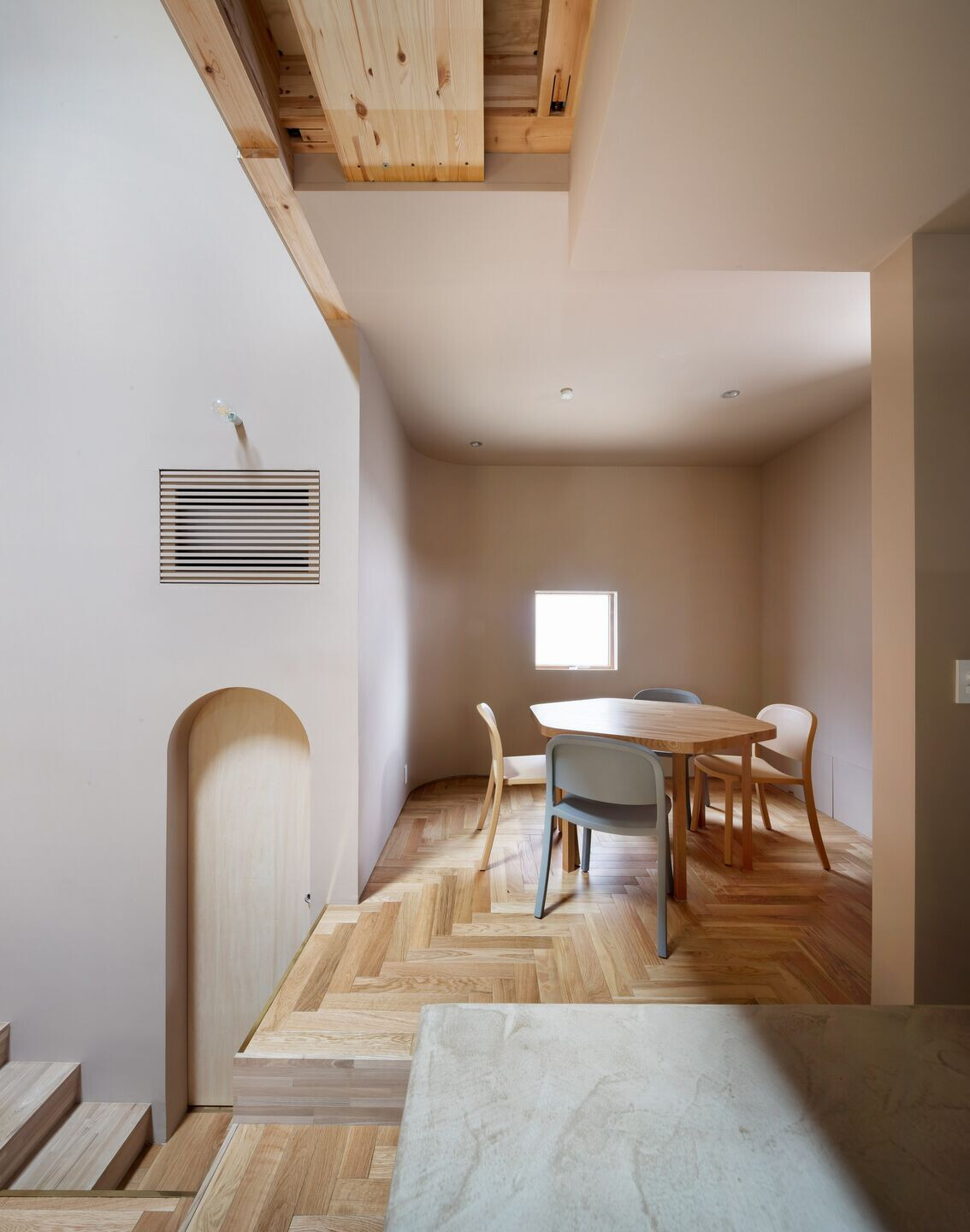
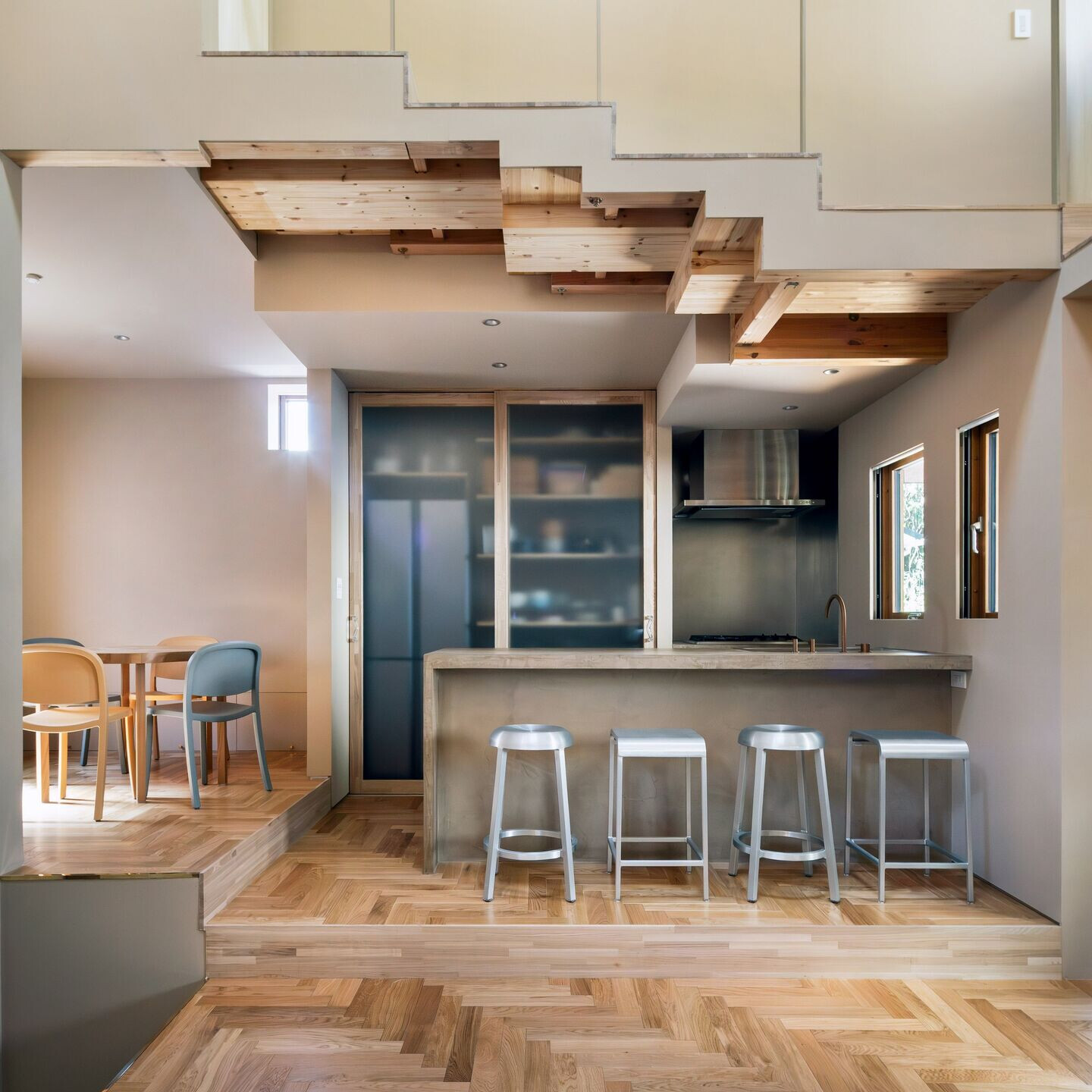
Furthermore, we responded to the picturesque view of Kamakura through landscape design and the exterior form of architecture. The garden design is divided roughly into two zones. One is the Approach Zone, which leads to the entrance and the garden facing the front road. Another is the Terrace Zone, which includes the wooden deck steps and a kitchen garden, surrounded by a 1.8-meter-high wall on the back of the building.
There are approximately 80 species of plants planted in the Approach Zone. We combined and adjusted many different colors to thoroughly design the color palette. Considering how the site is rich in nature, we deliberately cut the number of species from the original flora and instead aimed to add an accent to the landscape through our choice of plants. There have been visitors from the neighborhood every day since the completion, and we believe we have succeeded in designing a pleasant planting scheme. In the Terrace Zone, there are approximately 20 species of edible herbs. The flexible outdoor space covered with fragrant wood chips also provides a place to sit on the steps and even enjoy a meal.
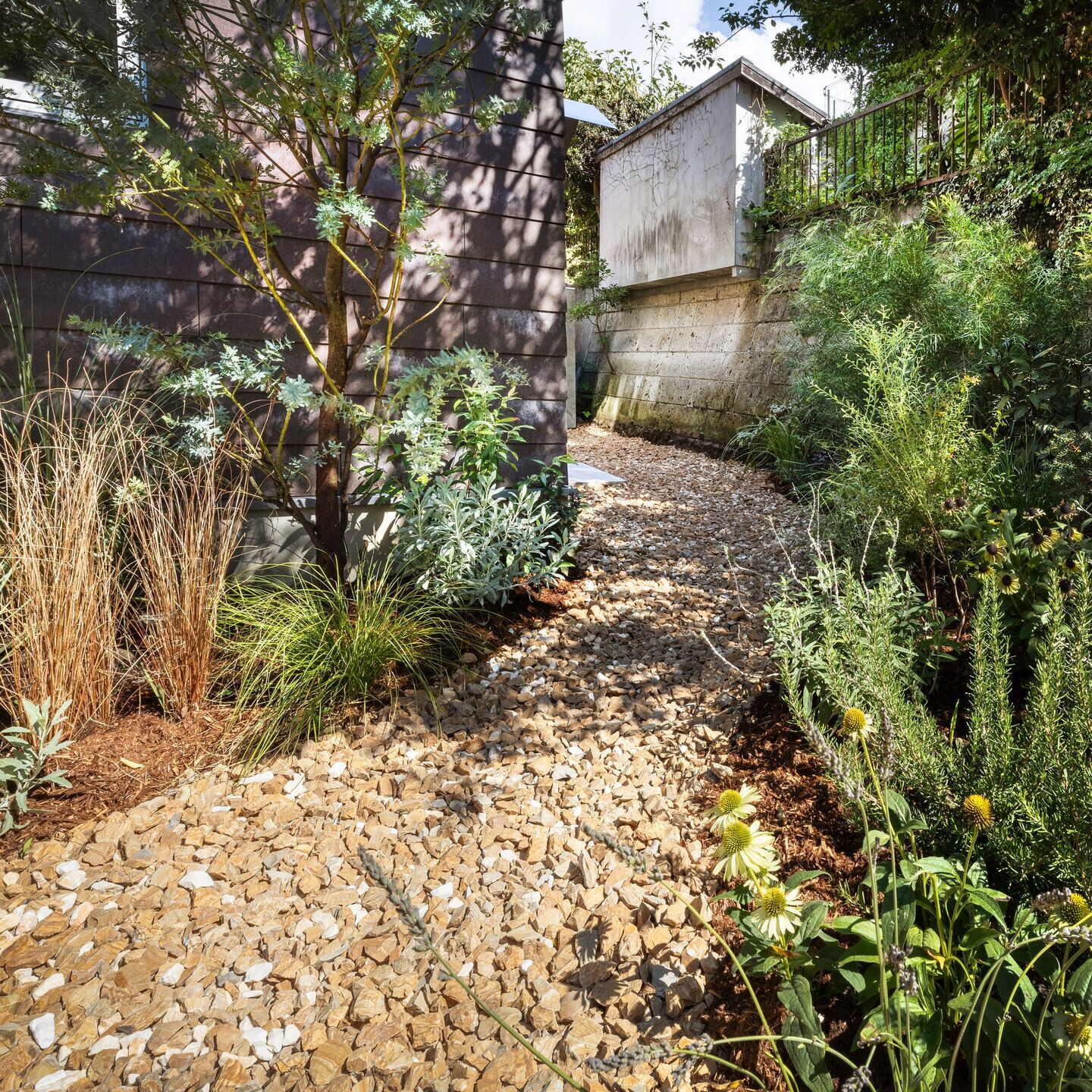
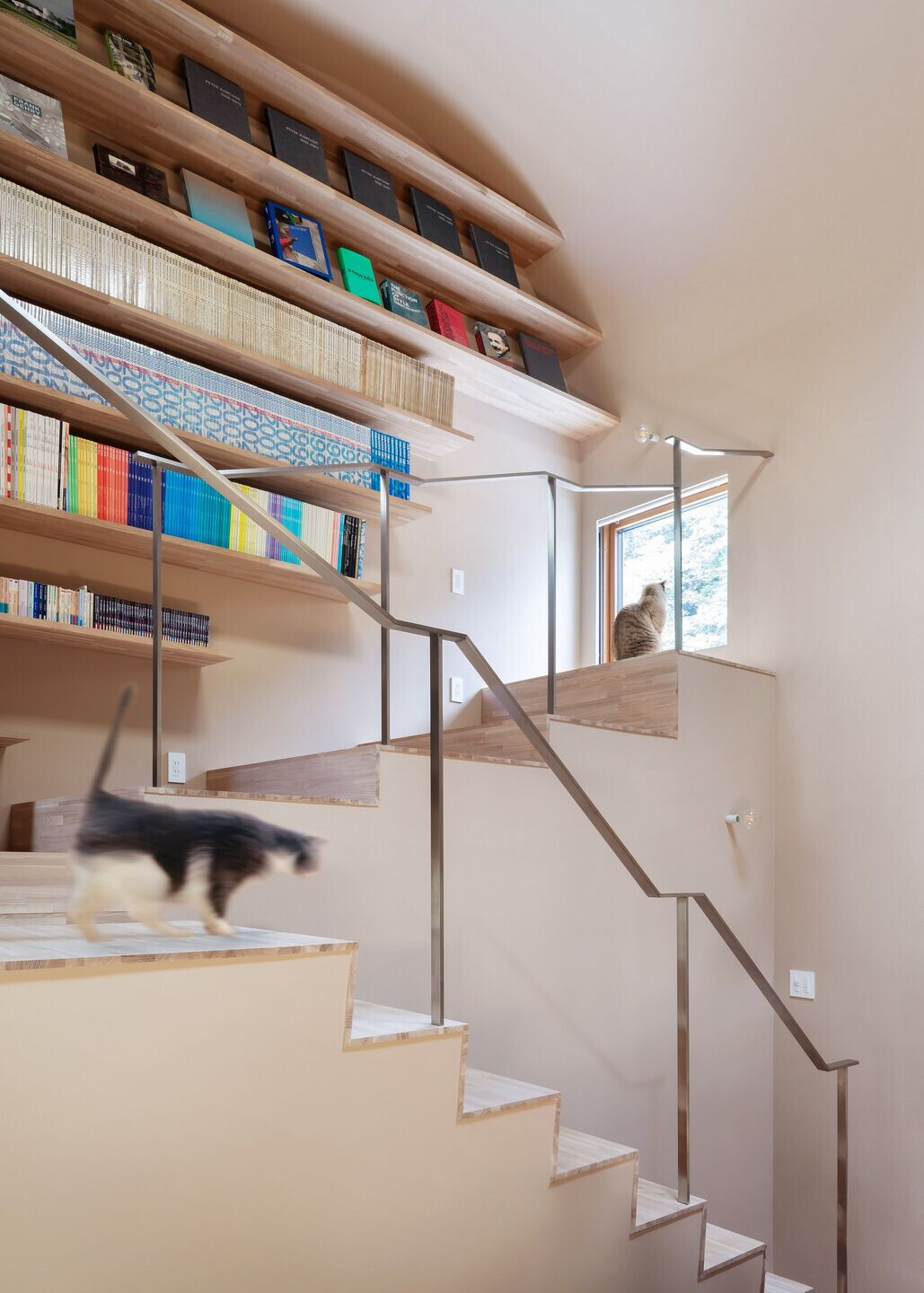
The form of this house consists of two L-shaped volumes, each with a shed roof of different angles. By interlocking the two volumes, we designed a basic shape that simplifies construction and blends in with the mountains of Kamakura yet avoids being a house we have all seen before.
We also believe that cats looking out the window is a sight that improves the neighborhood landscape. We meticulously designed the placement and the height of the windows so that passersby and visitors can appreciate the adorableness of the cats as a part of the architectural exterior and the scenery.
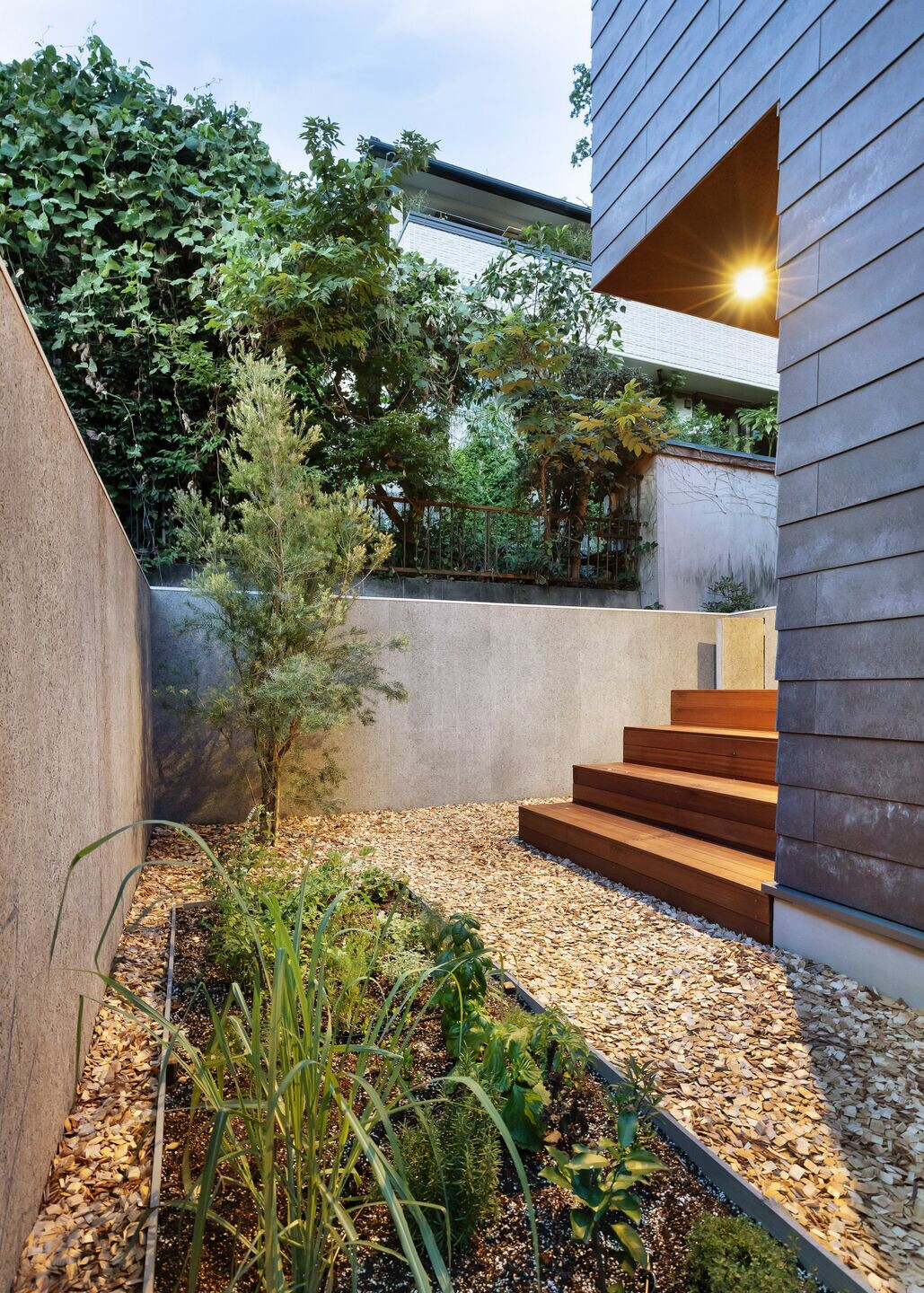
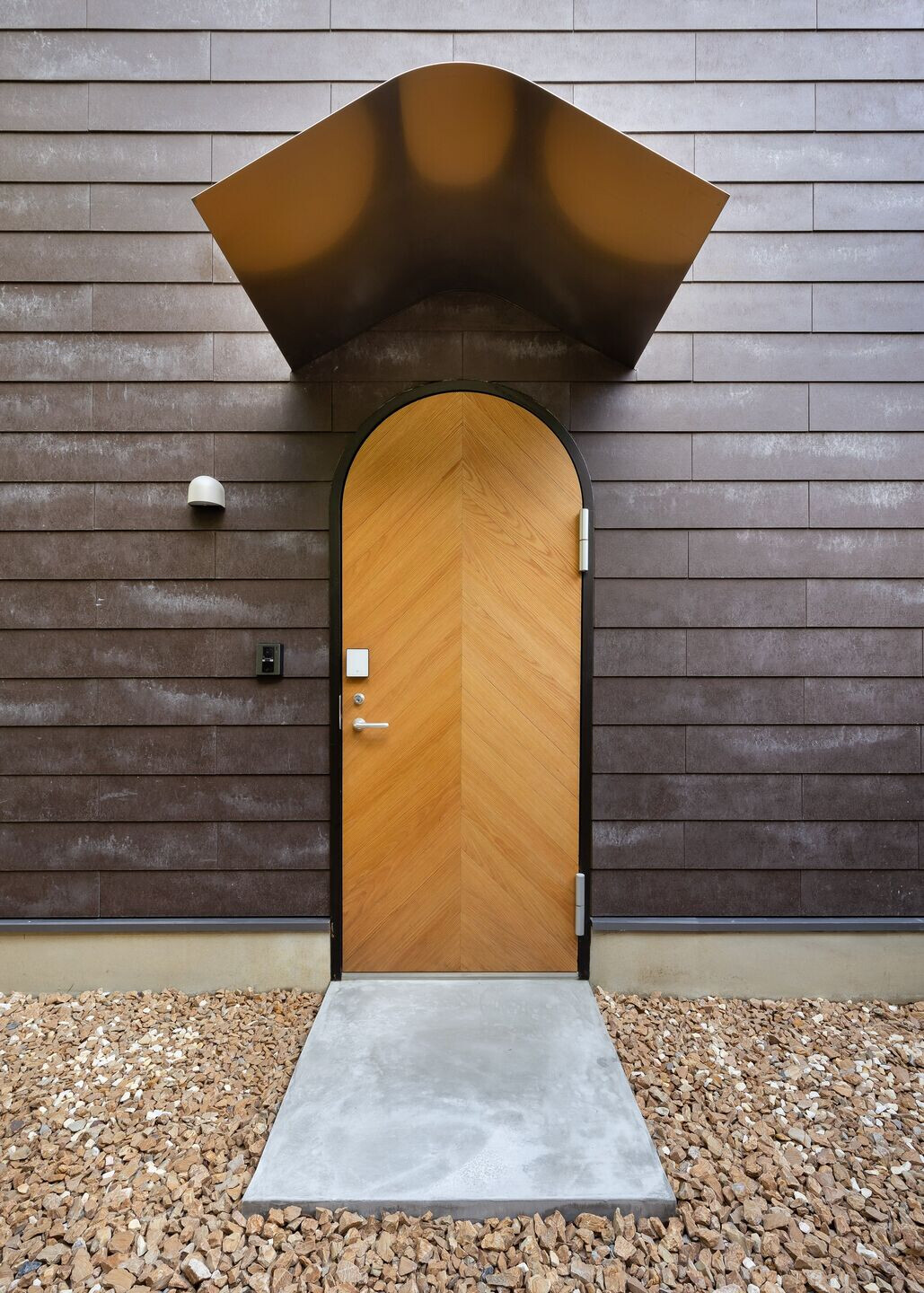
In Japan, there are ten times more pet cats than newborn babies. The number of pets in total exceeds the number of children as well. In addition, Japan is one of the fastest-aging countries, where there is an increasing interest in animal therapy. Therefore, we aimed to consider life with cats seriously from an architect’s perspective.
For cats, the house is their whole world. We wished to learn how to design a home from a feline perspective. We took our design cues from what we gleaned from the ten years of living with them. By taking in not only the cats’ words nor the human’s, we strived to propose an architectural approach that embraces and mixes the words of both cats and humans.
text by Tan Yamanouchi, Architect

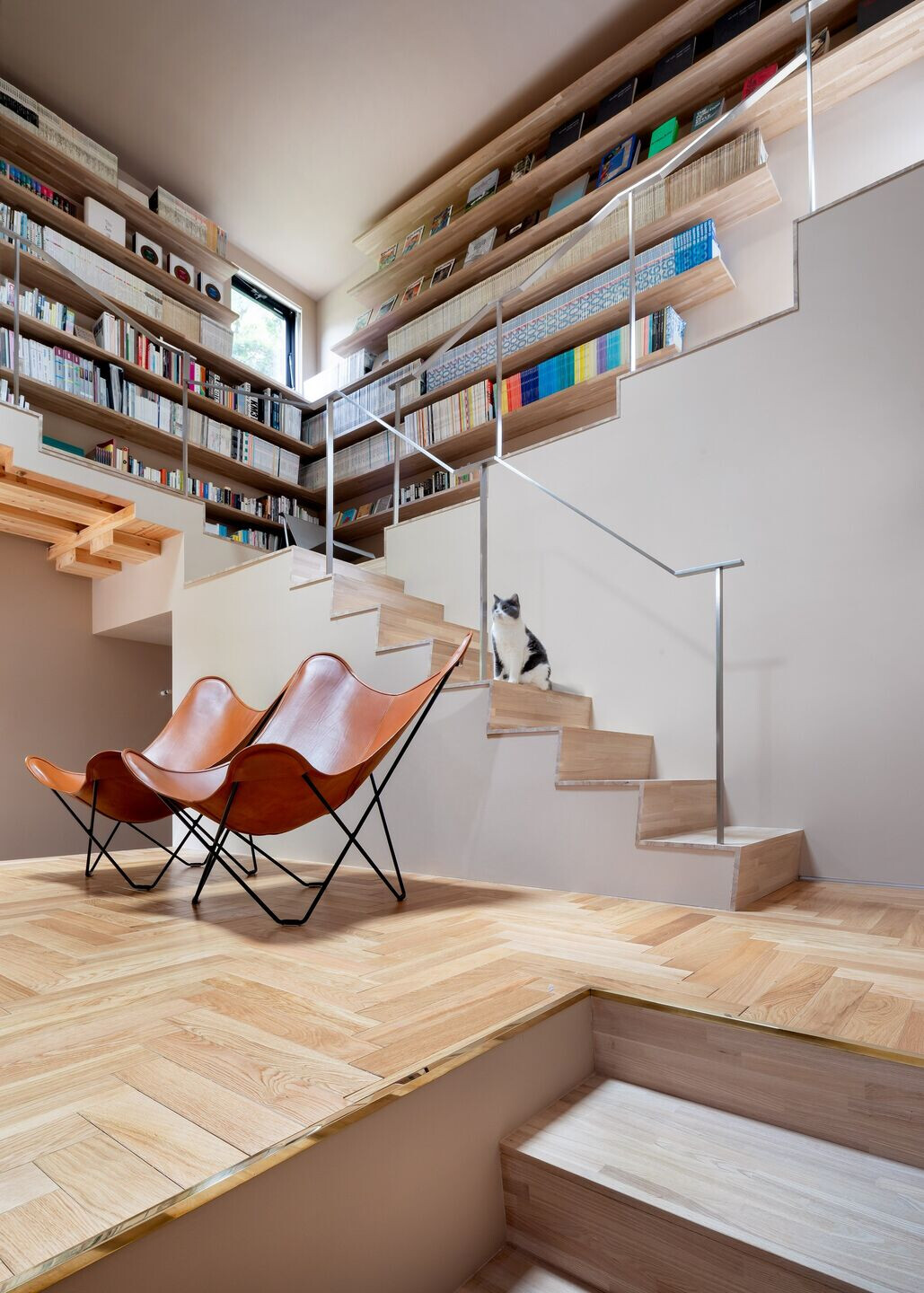
Team:
Architect: Tan Yamanouchi & AWGL/Tan Yamanouchi (Principal architect)
Structural engineer: Yamawaki Katsuhiko Architectural Engineering Design/Katsuhiko Yamawaki, Yumena Hirata
Constructor: Tokyo Kenchiku Plus/Satoshi Nakazato, Yuta Ogura
Cooperation in finishing work: Kojima Komuten/Makoto Kojima, Riki Matsui
Planting: SOLSO /Hidenori Juna
Wood deck, fence: Iroha Zoen/Masashi Hisanaga, Mutsumi Hisanaga
Photography: Lamberto Rubino
